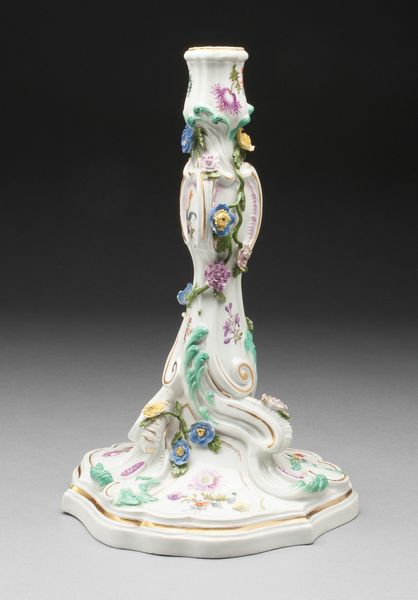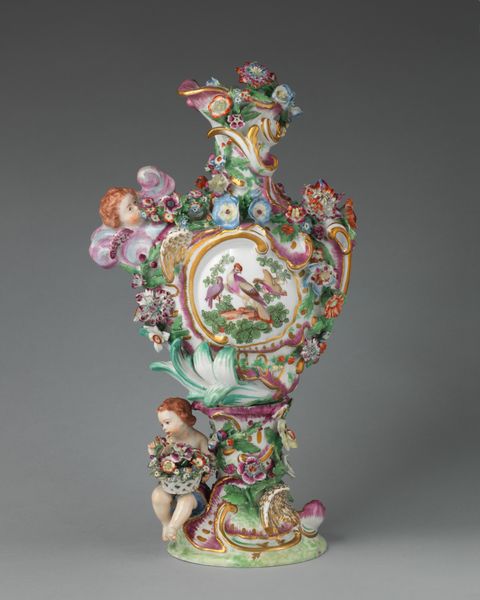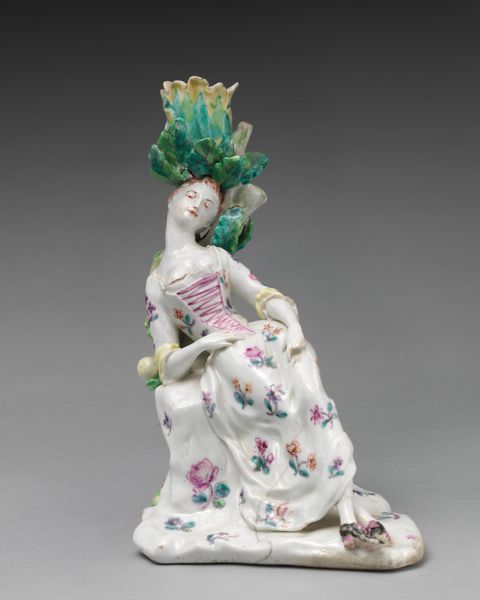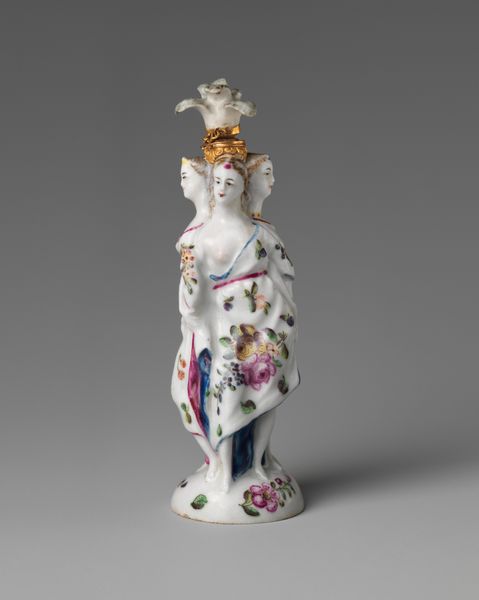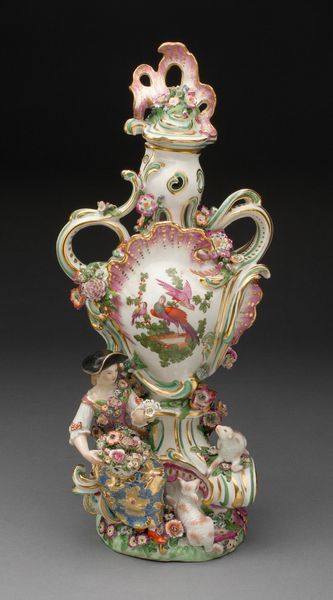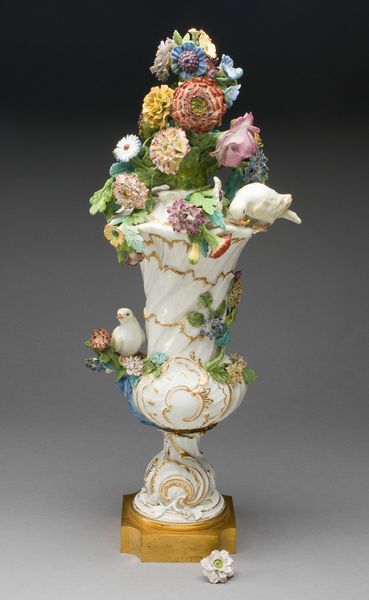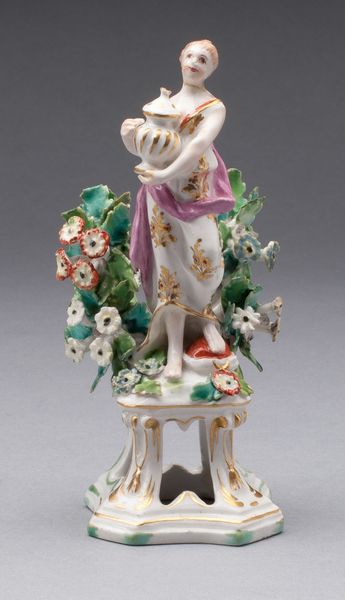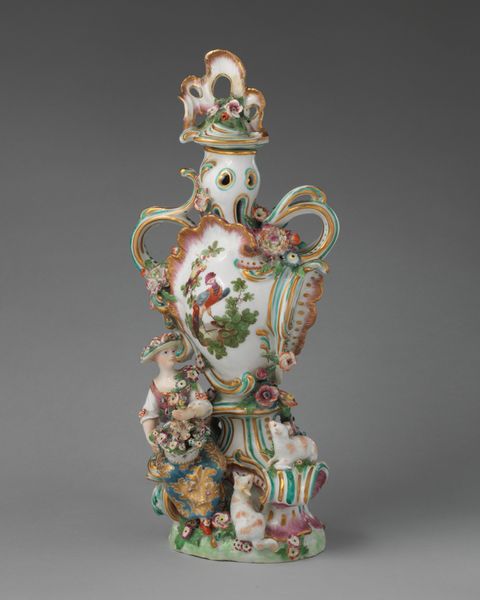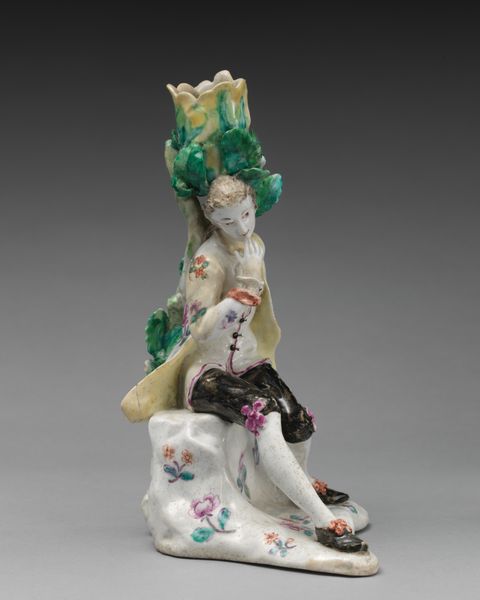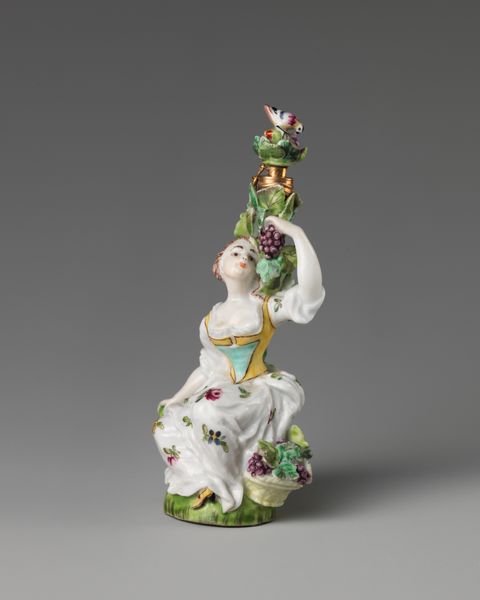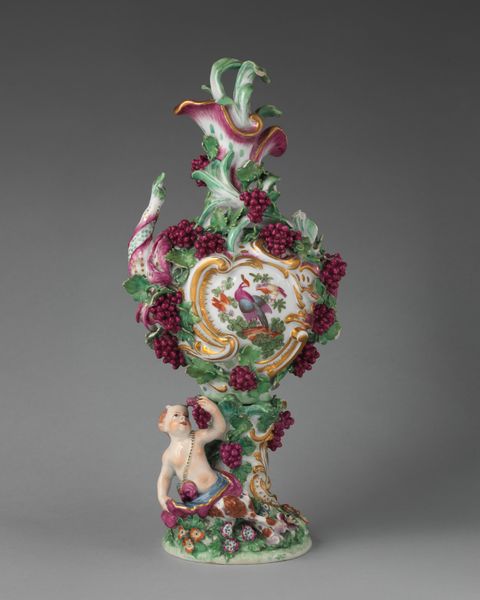
ceramic, porcelain, sculpture
#
decorative element
#
ceramic
#
jewelry design
#
porcelain
#
sculpture
#
ceramic
#
decorative-art
#
rococo
Dimensions: 25.4 × 16.2 cm (10 × 6 3/8 in.)
Copyright: Public Domain
Curator: Here we have an 18th-century porcelain candlestick crafted by the Meissen Porcelain Manufactory, a stunning example of Rococo artistry. Editor: The delicacy of this object is immediately striking; the floral ornamentation makes the candlestick look almost like a porcelain confection. Curator: Observe the elaborate structure, which is quintessentially Rococo; consider the curving lines and the intricate details, the carefully placed floral appliques, all unified by the pure white ground of the porcelain. Editor: I am interested in thinking about the conditions under which this was made. Consider the skill of the Meissen artisans who had to manipulate the porcelain clay—likely under strict hierarchies and factory settings, a stark contrast to the fragility it evokes. Curator: Absolutely. The surface decoration has various registers and styles—the larger appliques, and then tiny colorful flower accents—that show real artistic planning. This wasn’t simple assembly. Editor: It raises questions about luxury and labor in that period. Who was illuminating their spaces with light from this candlestick, and at what cost, literally and figuratively, were such delicate, intricate pieces of functional art made? Curator: It embodies 18th-century aesthetics perfectly with its embrace of ornate design, asymmetry and celebration of artificial beauty over naturalism. You know the Rococo style was not so loved in times after... Editor: Well, the excess says something too, about overindulgence and societal imbalance, about what art *does* in these displays of craft versus use. A light in the dark with complicated context and creation. Curator: An object reflecting light and illuminating broader issues about taste, craft and material reality. It’s an intersection, is it not? Editor: Indeed; there’s light and shadow in porcelain itself, in more ways than one.
Comments
No comments
Be the first to comment and join the conversation on the ultimate creative platform.
